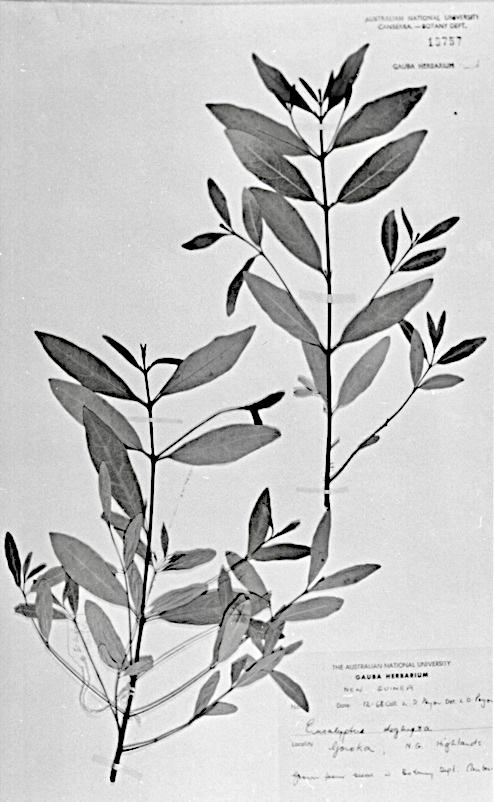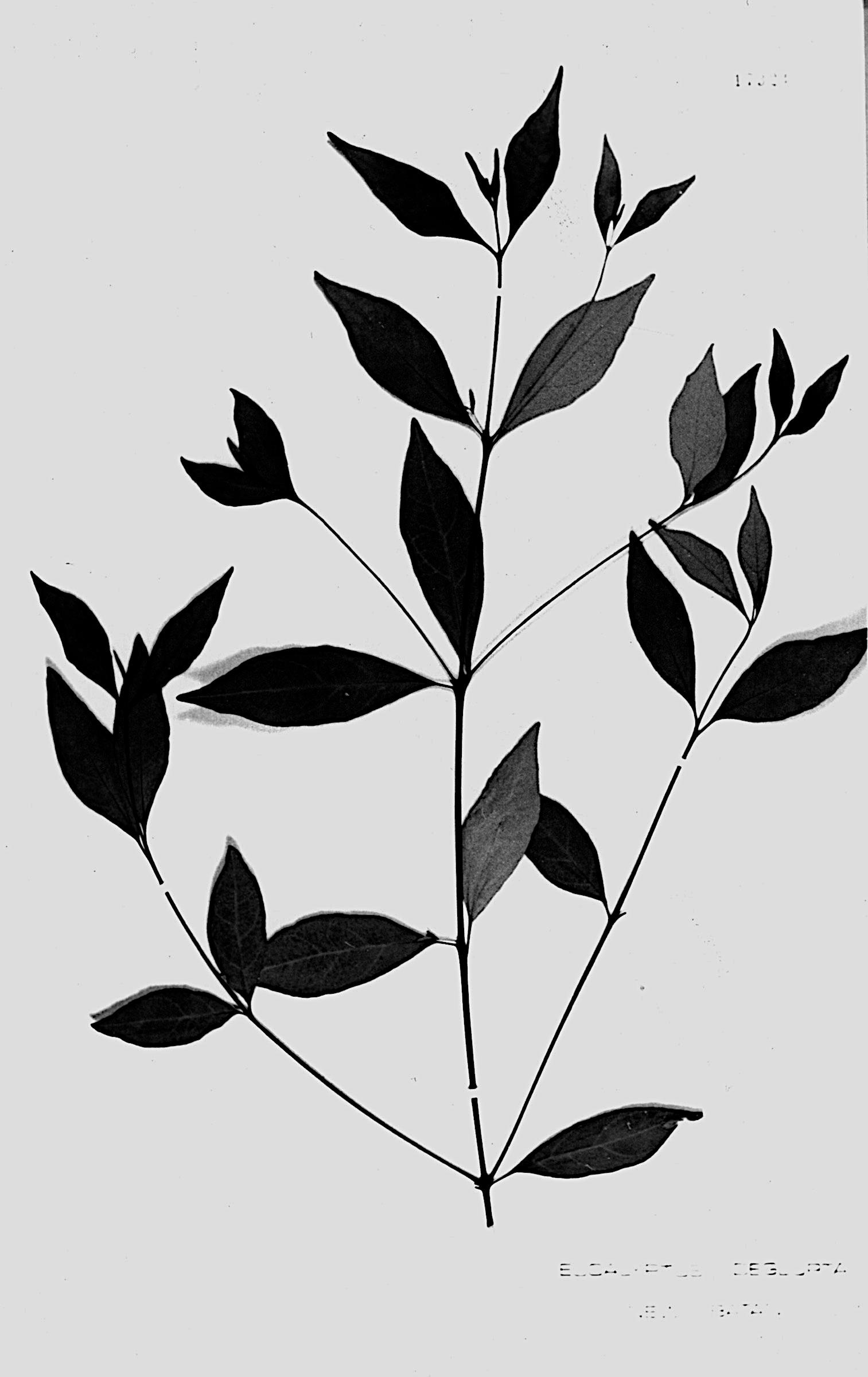
4 minute read
Experimental methods for growing plants of E. deglupta in the phytotron
from PNGAF MAG ISSUE # 9B - 5B4D3 Dr John Davidson Accompaniment "RAINBOW EUCALYPT MAN" Part 3 of 8 parts
by rbmccarthy


Advertisement
Specimens of seedlings grown from seed collected in three localities that were raised by Professor Pryor in the glasshouse of the Department of Botany, ANU in November 1968. Left: Goroka PNG, Middle: Ossima PNG, Right: New Bataan, Mindanao, Philippines. (My photographs of dried specimens in the Gauba Herbarium, Department of Botany, ANU, 1970.)
Firstly, geographic (provenance) variation was investigated by using seedlings, of undetermined genetic origin, grown from seed collected from several localities over the natural range of E. deglupta and grown under a number of controlled temperature regimes across several of the naturally lit glasshouses.20 Secondly, half-sib seedlings and clonal cuttings were used to separate the observed variation among plants into genetic and environmental components. The controlled environment facility of the phytotron, using suitably identified genetic material, could be employed to study genotypic variation and genotype x environment interactions with minimum replication using controlled temperature and day length treatments applied in “C”-type cabinets.
Experimental methods for growing plants of E. deglupta in the phytotron
The experimental techniques used were common to more than one experiment.21 Five temperature regimes were used in the open glasshouses, selected from among the standard ranges that each of the 15 glasshouses was set at: 21/16, 24/19, 27/22, 30/24 and 33/28 °C.22Relative humidity was not controlled but remained above 40% in all glasshouses.
20 The naturally lit glasshouses used had their photoperiod set at a constant 16 hours of “daylight” (4 AM to 8 PM) by using incandescent lamps to supplement the seasonal variation of natural sunlight in Canberra. 21 Chapter 8, pages 156 – 174 In Davidson J 1972 loc. cit. 22 This convention is used throughout. The day (higher) temperature was held for 8 hours from 8.30 AM to 4.30 PM, the night temperature for the remaining 16 hours. Temperatures were held within ±1.5°C of specification.
Mean air temperatures in the C-type cabinets made available were 24/19, 27/22 and 33/28 °C day/night. Day temperatures were controlled within ±0.25°C of specification. The natural daylight part of the daily photoperiod was limited to eight hours by separate automatic lightproof shutters that closed over the cabinet. The “day” photoperiod was extended from eight hours of natural daylight to 12 and 16 hours by incandescent lamps, which came on when the shutters closed. So, there were 3 temperatures x 3 day lengths or 9 “treatments” possible. There was space for up to 24 plants in 13 cm diameter pots in each treatment, up to a total of 216 plants.
Time clock control settings for temperature, daylight and photoperiod light settings were accurate to about ±3 minutes.
Plants were grown in sterilized vermiculite and watered with tap water in the morning and a standard Hoagland’s solution in the afternoon. In the 33/28 °C regimes, additional water was applied at mid-day.
A number of variables was measured on each plant (seedling or cutting):
LIST OF VARIABLES 28.*Total number of nodes produced (TNODES) 29. Density of stem wood in the internode above the marked node (gms/cc) (DENSN) 30. Basal stem diameter under bark at harvest (cm) (DIAMB) 31. Density of the wood at the base of the stem (gms/cc) (DENSB) 32. Rate of elongation of the internode above the marked node (that is where the density sample for 29 was obtained) (cms/week) (RELONG) 33. Rate of total height growth (cms/wk) (RTHT) 34. Branch oven dry weight at harvest (gms) (BRWT) 35. Mean oven dry weight of the two leaves at the marked node at harvest (gms) (LEAF) 36. Stem oven dry weight at harvest (gms) (STWT) 37. Mean leaf area of the two leaves at the marked node at harvest (square inches)23(AREA) 38. Mean leaf width of the two leaves at the marked node at harvest (cms) (WIDTH) 39. Mean length of the two leaves at the marked node at harvest (cms) (LENGTH) 40. Rate of diameter growth at the base of the stem (cms/week) (RTDIA) 41. Rate of diameter growth at the internode above the marked node (that is where the density sample for 29 was obtained (cms/week) (RTDIAN) 42. Total height of plant at time of harvest (cms) (TOTHT)
* The numbers opposite each parameter were used for reference to the parameter as a subscript of an x variable; for example x28 referred to total number of nodes produced. The capital letters at the end of the description of each variable were used as abbreviations for the variables in computer program coding.
23 Leaf outlines were traced, and the area of the trace measured with a planimeter available at the time, which was calibrated in the British Imperial System. The results later were converted to metric.









